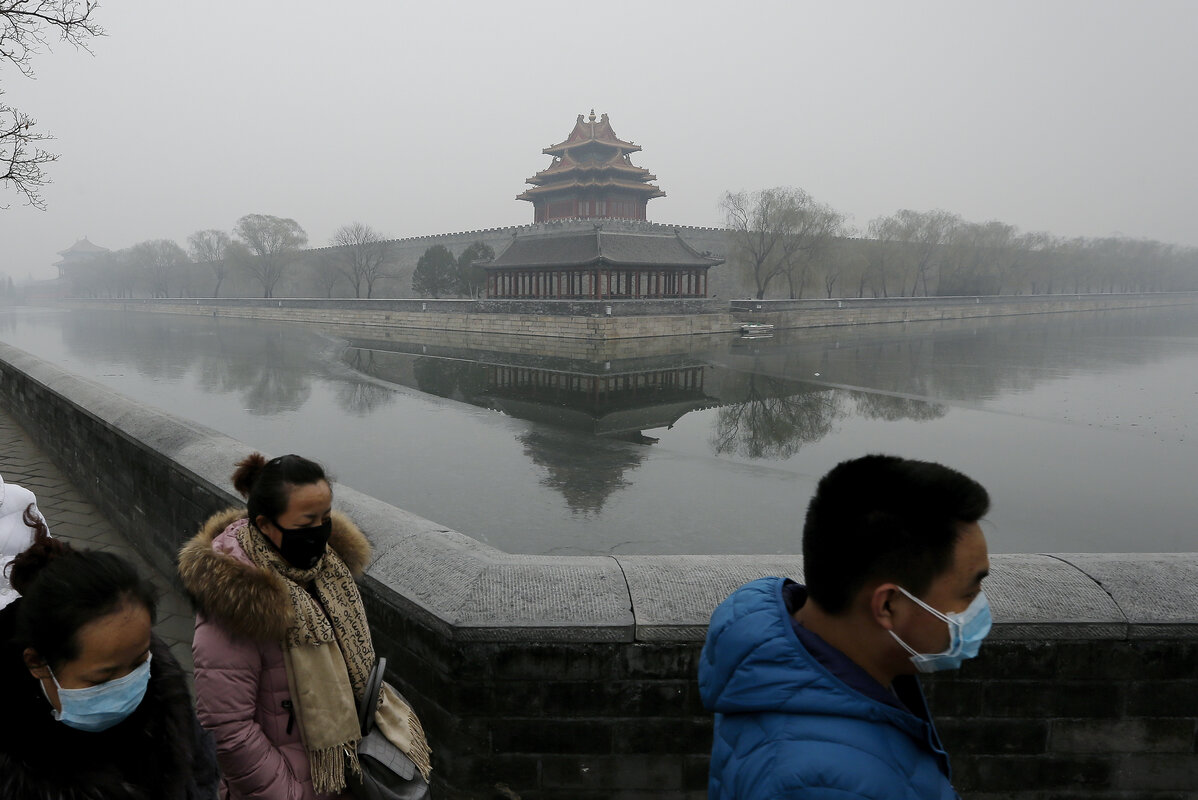Air pollution blamed for 5.5 million deaths annually. What are India, China doing?
Loading...
More than 5.5 million people die from air pollution each year, with more than 3 million of these deaths occurring in China and India, announced researchers Friday at the 2016 annual meeting for the American Association for the Advancement of Science.
“Air pollution is the fourth highest risk factor for death globally and by far the leading environmental risk factor for disease,” said Dr. Michael Brauer, a professor at the University of British Columbia’s School of Population and Public Health in Vancouver, Canada, in a press release. “Reducing air pollution is an incredibly efficient way .”
In 2013, an estimated 1.6 million people died in China and 1.4 million died in India from poor air quality.
In the face of these troubling figures, China and India have both taken on new initiatives to address their air quality and decrease the millions of premature deaths each year. And the urgent action demanded by these large death tolls can speed up larger environmental protection efforts, say scientists.
“A couple of great things are happening in China,” Dr. Brauer tells ���Ǵ��� in a phone interview. “They have started to do measurements [of air quality] so we can track progress, and there is at least a leveling off of pollution levels – and maybe even a decrease, but it is too early to say for sure.”
At the Paris climate talks, China vowed that 2030 would see , beginning a future with 20 percent carbon-free electricity sources.
“It looks like China is on the right path,” Brauer tells The Monitor. “The issue is how quickly can the levels come down?”
And while some say China’s emission goals could be stronger, at least they are moving in the right direction.
“The levels in China in a place like Beijing today are eight to 10 times higher than the healthy standards set by the World Health Organization, so they have a long way to go,” Dan Greenbaum, president of the Health Effects Institute in Boston, tells Voice of America. “They’ve tightened their standards for new vehicles, they’ve cleaned up their fuel, and to capping and reducing their coal.”
At the Paris climate talks, the Indian government pledged to reduce total emissions by 33-35 percent of 2005 levels by 2030, generate 40 percent of electricity from non-fossil fuel sources, and undertake aggressive reforestation efforts to absorb 3 billion tons of carbon dioxide by 2030.
Going forward, “our every action will be cleaner than what it was earlier,” India’s Environment Minister Prakash Javadekar told reporters in October after submitting his country’s climate pledge.
But the same stumbling-block continues to threaten both air quality improvement and larger climate change success in India: coal.
Bauer says household stoves, burning coal or animal dung, pollute family homes and collectively create a major obstacle for India's air-quality goals.
“It’s not a centralized problem. It’s all over the country. And it’s not just a technological problem, ,” said Dr. Chandra Venkataraman, a chemical engineer who analyzed local pollution for the report, to the Washington Post.
Scientists hope that the 5.5 million deaths, while tragic and unnecessary, will catch global attention. Because air quality has immediate repercussions for global populations, efforts to decrease the millions of air quality deaths may push along broader efforts to mitigate human-induced climate change.
“One of the problems with climate change: people have a difficulty seeing the impacts right now and a lot of it is ‘in the future.’ [Climate change] has a slow, progressive impact, but the work we're doing on air pollution is for people,” explains Brauer.
“But there is a lot of overlap in what needs to be done for climate change and [air] pollution.... In a larger extent we’re talking about the same sort of things. Our work is giving more urgency to many of the measures discussed and agreed upon in Paris.”





